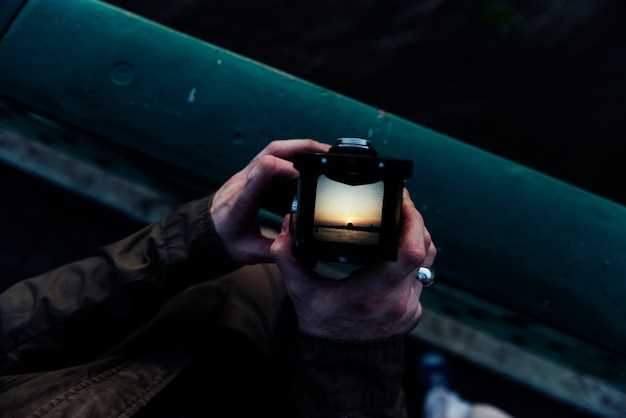
Upgrading the lighting system of your Jeep with LEDs can significantly enhance both its aesthetic appeal and functionality. These energy-efficient lights provide superior brightness and longevity compared to traditional halogen bulbs, making them a popular choice among off-road enthusiasts. In this guide, we will delve into the essential steps required to successfully install LED lights on your Jeep and explore the various upgrades available to elevate your driving experience.
Before embarking on this lighting transformation, it is crucial to understand the benefits of LEDs. Not only do they consume less power, allowing for extended battery life during night excursions, but they also improve visibility under challenging road conditions. The spectrum of colors and designs available further allows for personalization, ensuring that your Jeep stands out on any terrain.
Whether you’re looking to illuminate your path with brighter headlights, add accent lighting for a stylish touch, or enhance visibility with off-road lights, this article will provide you with a comprehensive approach to installing LED lights on your Jeep. Prepare to explore the tools, techniques, and tips that will help you achieve a professional-level upgrade that complements your vehicle’s rugged spirit.
Selecting the Right LED Lights for Your Jeep Model

When upgrading the lighting on your Jeep, selecting the right LED lights is crucial for both performance and aesthetics. Different Jeep models may have varying requirements, so it’s essential to consider compatibility with your specific vehicle. Start by consulting your owner’s manual or online resources to determine the recommended size and type of LED lights for your model.
One of the first factors to assess is the beam pattern of the LED lights. Options typically include spot, flood, or hybrid beams, each suited for different driving conditions. For off-road adventures, a flood beam can illuminate wide areas, while a spot beam is perfect for long-distance visibility on dark trails.
Another consideration is the lumen output of the LED lights. Higher lumens mean brighter lights, which can significantly enhance your nighttime visibility. However, be mindful of the potential for glare and ensure the lights are properly aimed to avoid dazzling other drivers.
Durability is also paramount when selecting LED lights for your Jeep. Look for lights that are resistant to water, dust, and impacts, ensuring they can withstand rugged terrains and varying weather conditions. Furthermore, opt for products that come with a warranty, as this can be an indicator of quality and reliability.
Energy efficiency is another important aspect. LED lights consume less power, reducing the load on your Jeep’s electrical system and extending the lifespan of your vehicle’s battery. This is especially beneficial if you plan to use additional electrical accessories while off-roading.
Finally, consider the aesthetic features of the LED lights. Many Jeep owners want their vehicles to reflect their personal style. Choose colors and designs that complement your Jeep’s exterior, whether you prefer classic white lights or colorful options for added flair.
Step-by-Step Guide to Wiring and Mounting LED Lights
Upgrading your Jeep’s lighting with LEDs can significantly enhance visibility and aesthetics. Follow this detailed guide to successfully wire and mount your LED lights.
Step 1: Gather Your Materials
Before starting, ensure you have the necessary materials: LED light bars or pods, wiring harness, switch, connectors, electrical tape, and tools like wire strippers and a screwdriver.
Step 2: Choose the Mounting Location
Identify an optimal spot on your Jeep for LED light installation. Common locations include the roof, front bumper, or rear. Ensure the lights will not obstruct existing features and will receive adequate power supply.
Step 3: Prepare the Wiring Harness
Unpack your wiring harness and familiarize yourself with its components. The harness typically includes wires for power, ground, and a switch. Follow the manufacturer’s instructions for any specific wiring details.
Step 4: Mount the LED Lights
Using the provided brackets, securely mount the LED lights in the chosen location. Make sure the fixtures are tight and positioned to avoid any movement during off-road excursions. Double-check to keep them even for aesthetic purposes.
Step 5: Connect the Wires
Start by connecting the positive lead (usually red) from the LED lights to the power wire of the harness. Use connectors to make a secure connection. Next, attach the negative lead (usually black) to a suitable ground point on your Jeep’s chassis, ensuring a solid electrical connection.
Step 6: Install the Switch
Choose a convenient location for the switch inside your Jeep. Using a wire stripper, prepare the wires leading to the switch. Connect the switch in line with the positive lead from the wiring harness. Secure the switch and ensure it’s easy to access while driving.
Step 7: Test the LED Lights
Before finalizing everything, it’s crucial to test the lights. Connect the battery and turn on the newly installed switch. Check if all LEDs illuminate properly and ensure there are no flickering issues.
Step 8: Secure and Finalize
Once confirmed that everything works, secure all wiring using electrical tape and zip ties, preventing any movement or exposure to elements. Tidy up the area, ensuring no loose cables are present.
Step 9: Enjoy Your Upgrades
With the installation complete, you can now enjoy enhanced lighting capabilities. These LEDs not only improve visibility during night rides but also add a modern touch to your Jeep’s overall appearance.
Testing and Troubleshooting Your Jeep’s New LED Lighting System

Once you have completed the installation of your new LED lighting system, it’s essential to test and troubleshoot to ensure everything functions correctly. Here are the key steps to follow:
-
Visual Inspection: Before powering up your LEDs, check all connections and wiring. Look for:
- Loose connections
- Frayed wires
- Corrosion on terminals
-
Power On: Turn on your Jeep’s lighting system to check:
- If the LEDs illuminate correctly
- If all lights are functioning (not flickering or dim)
- Any unusual noises from the wiring harness
-
Testing Mode: If your Jeep has different lighting modes (such as high beam, low beam, or strobe), test each one to ensure:
- Each mode performs properly
- There are no flickers or delays when switching modes
-
Troubleshooting Common Issues: If you encounter problems, consider the following:
- No lights turn on: Check the fuse related to your LED upgrades.
- Intermittent lighting: Inspect for loose connections or damaged wires.
- Lights flickering: Ensure your electrical system has stable voltage and check the compatibility of your LED lights with your Jeep.
-
Final Testing: After troubleshooting, repeat the initial tests to confirm that:
- All issues have been resolved
- Your new lighting system operates as intended
By following these steps, you can ensure your Jeep’s new LED lighting system is thoroughly tested and any issues are promptly addressed, enhancing your driving experience with reliable brightness.




